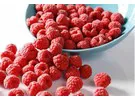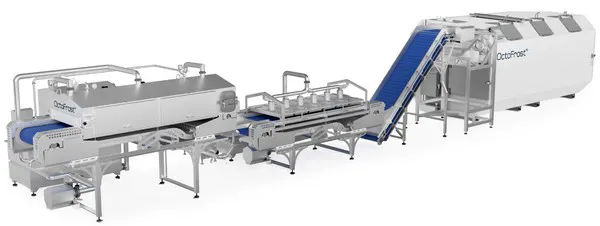As oceans become increasingly polluted, low underground water levels reaching historically low levels, CO2 levels increasing in the atmosphere, and on top of that, a climate emergency right at our doorstep, it should really not be a surprise that one of the top three food trends when it comes to sustainability is reducing food waste. If we intend to address food security and mitigate climate change, these challenges need to be taken seriously, says Svetlana Plotean, marketing manager for IQF machinery manufacturer OctoFrost.
“According to the UN Environment Programme, roughly one-third of the food produced in the world for human consumption every year, about 1.3 billion tons, becomes lost or wasted.” Plotean explains. “A stunning fact taking into account the approximately 800 million undernourished people in the world today and the devastating consequences of the seemingly unstoppable climate emergency.”
 Looking at the waste levels of fruits and vegetables, the situation is even worse, Plotean states. “In the developing countries, 40% of food waste happens at during the post-harvest and processing stages. Meanwhile in more industrialized countries, more than 40% of the food waste happens at retail and consumers levels. When looking at the statistics of exports from developing to developed economies, it paints a pretty frightening picture. (https://www.foodbank.org.au/food-waste-facts-in-australia/)
Looking at the waste levels of fruits and vegetables, the situation is even worse, Plotean states. “In the developing countries, 40% of food waste happens at during the post-harvest and processing stages. Meanwhile in more industrialized countries, more than 40% of the food waste happens at retail and consumers levels. When looking at the statistics of exports from developing to developed economies, it paints a pretty frightening picture. (https://www.foodbank.org.au/food-waste-facts-in-australia/)
"Waste from fresh produce can skyrocket here to 70 or even 80% if we count everything from the fields to the consumer’s kitchens. According to European national studies fresh fruit and vegetables contribute to almost 50% of the food waste generated by EU households.” https://ec.europa.eu/jrc/en/news/eu-households-waste-over-17-billion-kg-fresh-fruit-and-vegetables-year
So what can we do to counter this food waste disaster? According to Plotean, one option for food processors would be to practice upcycling foods by adding value to by-products and surplus produce, while another brave trend has been to market and sell ‘ugly produce’ – meaning imperfect looking products:
“These can be smaller in size, have a different color or similar unusual features. There are also organizations trying to create awareness around the date labels, especially in the dairy industry, helping eliminating food waste this way. Equipment manufacturers, however, can bring their own share to the table. We at OctoFrost believe that innovative IQF technology could be used to tackle food waste issue on various levels.”
IQF products have the advantage, especially when it comes to convenience. Being able to defrost the exact amount that is needed and store the rest in their freezer, means there is no need to thaw the entire pack. But is the convenience factor enough these days? “Some food industry experts would argue that it isn’t. Consumers seem to be pickier about the quality, appearance and nutritional value of their produce. Technological innovation can play a big role here, specifically features that can make frozen produce look just as good as their fresh counterparts. This combined with locking in the nutrients, is game changing for consumer behavior.” Plotean explains.

It will take a lot more than just IQF to tackle the entire food waste problem, but Plotean thinks IQF can definitely play a big role in dealing with this very complicated problem. “Decreasing the household waste due to the convenience of using the exact needed amount, the IQF technology can even help the emerging trend of upcycling foods by dicing and IQF freezing imperfect or uneven pieces of the produce. In addition, it solves the issue of food distribution in regions with an abundance of fresh produce, where large amounts of fresh fruits and vegetables are wasted on the fields. Last, but not least, the IQF technology can be at the heart of setting up sustainable business models in the economically challenged communities where fresh produce is or can be harvested.”
“Overall, high-quality frozen products are indeed fresher, healthier, more convenient, and more sustainable for the future of our planet. Consumers and businesses both must and will shift the paradigm about how food is produced and consumed, as there is no one single solution for the global food waste problem. As a species, we will need to combine many different, innovative and courageous ideas to have a chance to prevail.” Plotean concludes.
For more information:
Svetlana Plotean
OctoFrost Group
Email: sales@octofrost.com
www.octofrost.com
